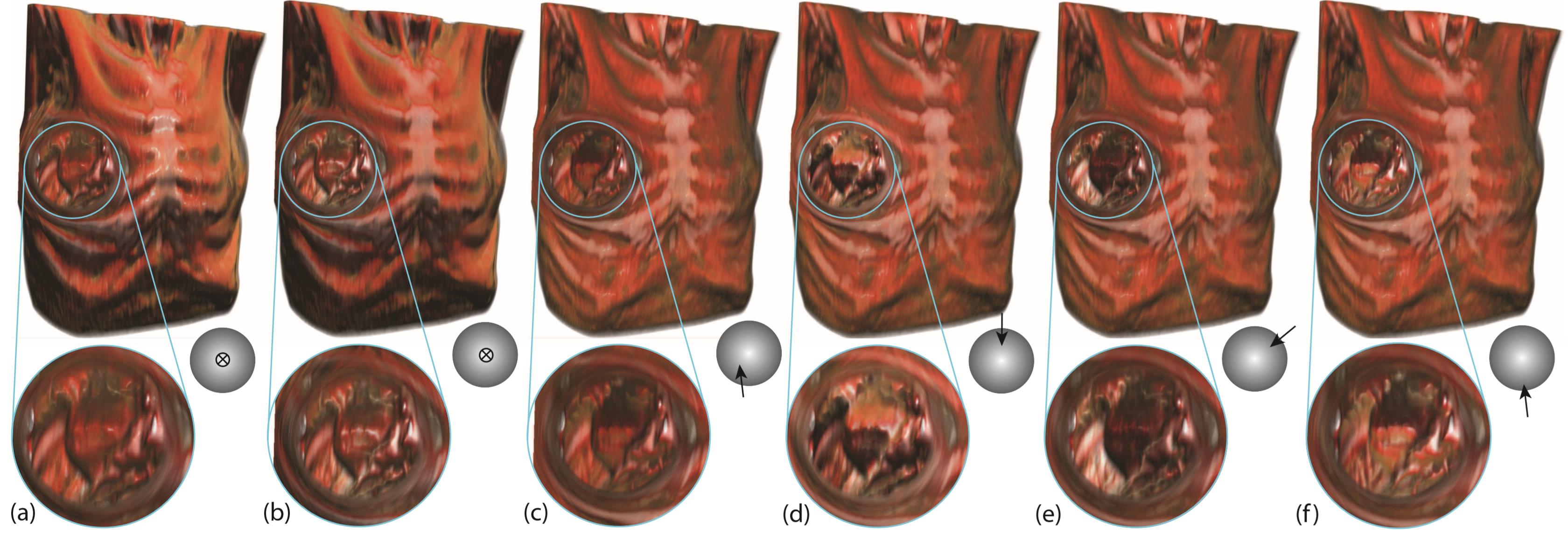Interactive obstruction-free lensing for volumetric data visualization
Occlusion is an issue in volumetric visualization as it prevents direct visualization of the region of interest. While many techniques such as transfer functions, volume segmentation or view distortion have been developed to address this, there is still room for improvement to better support the understanding of objects’ vicinity. However, most existing Focus+Context fail to solve partial occlusion in datasets where the target and the occluder are very similar density-wise. For these reasons, we investigate a new technique which maintains the general structure of the investigated volumetric dataset while addressing occlusion issues. With our technique, the user interactively defines an area of interest where an occluded region or object is partially visible. Then our lens starts pushing at its border occluding objects, thus revealing hidden volumetric data. Next, the lens is modified with an extended field of view (fish-eye deformation) to better see the vicinity of the selected region. Finally, the user can freely explore the surroundings of the area under investigation within the lens. To provide real-time exploration, we implemented our lens using a GPU accelerated ray-casting framework to handle ray deformations, local lighting, and local viewpoint manipulation. We illustrate our technique with five application scenarios in baggage inspection, 3D fluid flow visualization, chest radiology, air traffic planning, and DTI fiber exploration.
Changing lighting parameters in the lens. (a) Constant global specular coefficient. (b) Specular coefficient high in the lens and low outside. (c-f) Changing the in-lens light vector yields the effect of a flashlight rotating around the target. The ball icons illustrate the local light vector direction.
(a-c) A baggage scan is viewed from different angles. In view (c), a suspicious sharp object is spotted between a set of mugs. (d-f) Filtering densities using a classical 1D opacity transfer function removes progressively more of the occluders (mugs), but also the target. (g) The user applies the lens on the target object (double-click). An animation starts opening the lens, rays are gathered to pass through occluders. Halfway through the animation, the object is magnified, but only the area close to the lens is visible. (h) The fish-eye field of view at the end of the animation scatters rays to fully show the target. (i) The lens is increased to magnify the target (mouse scroll).

